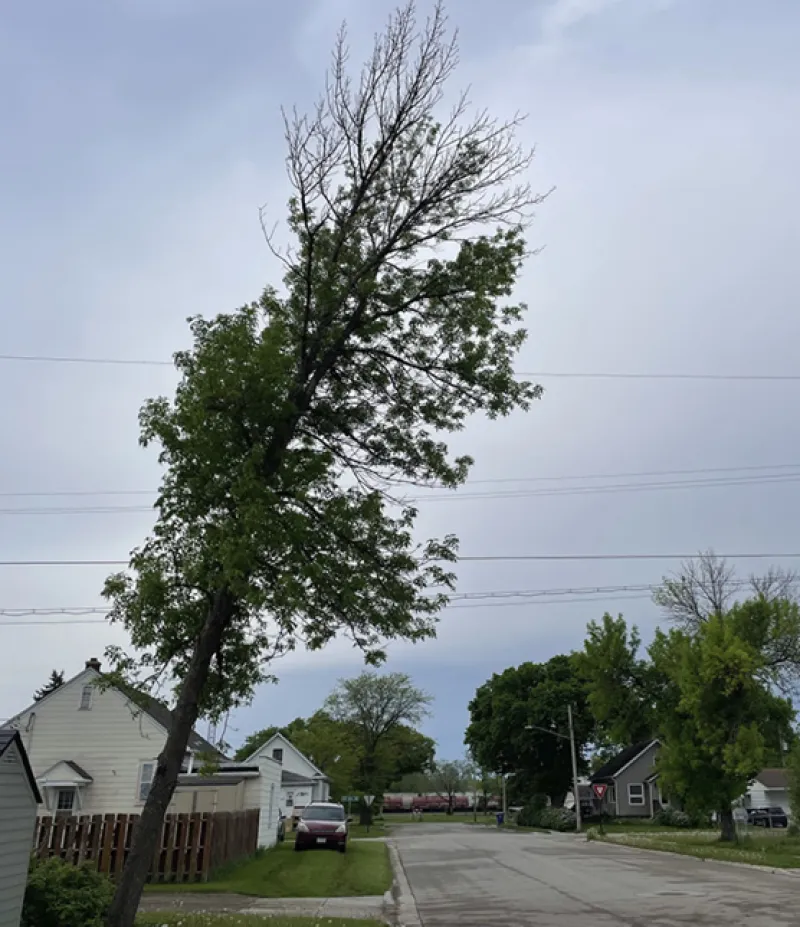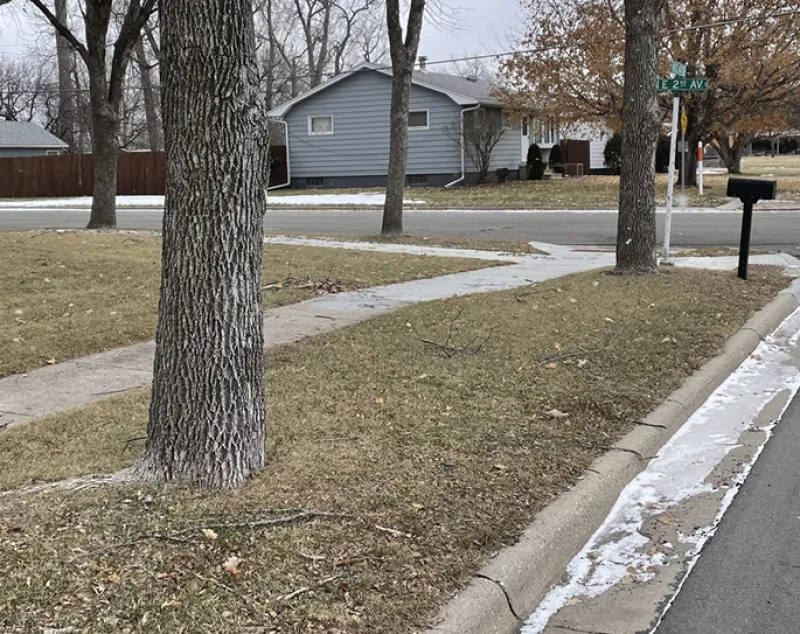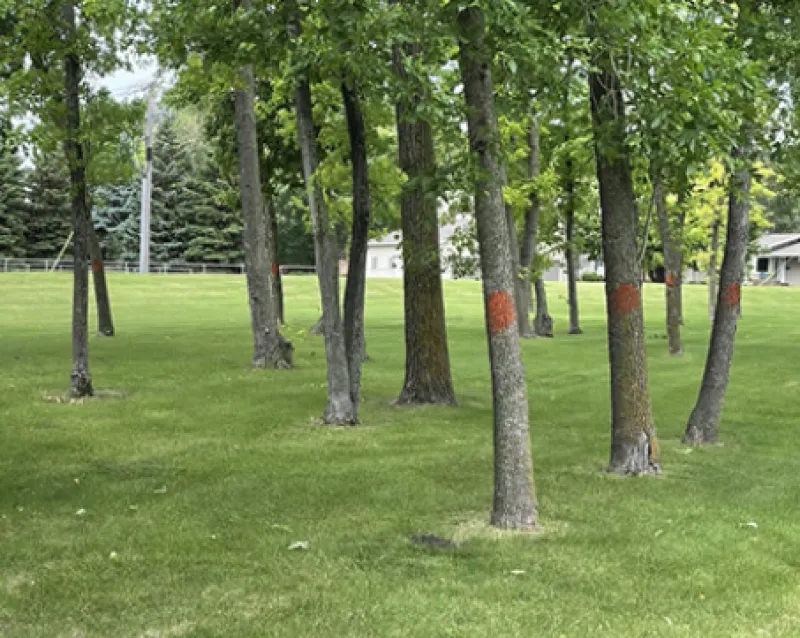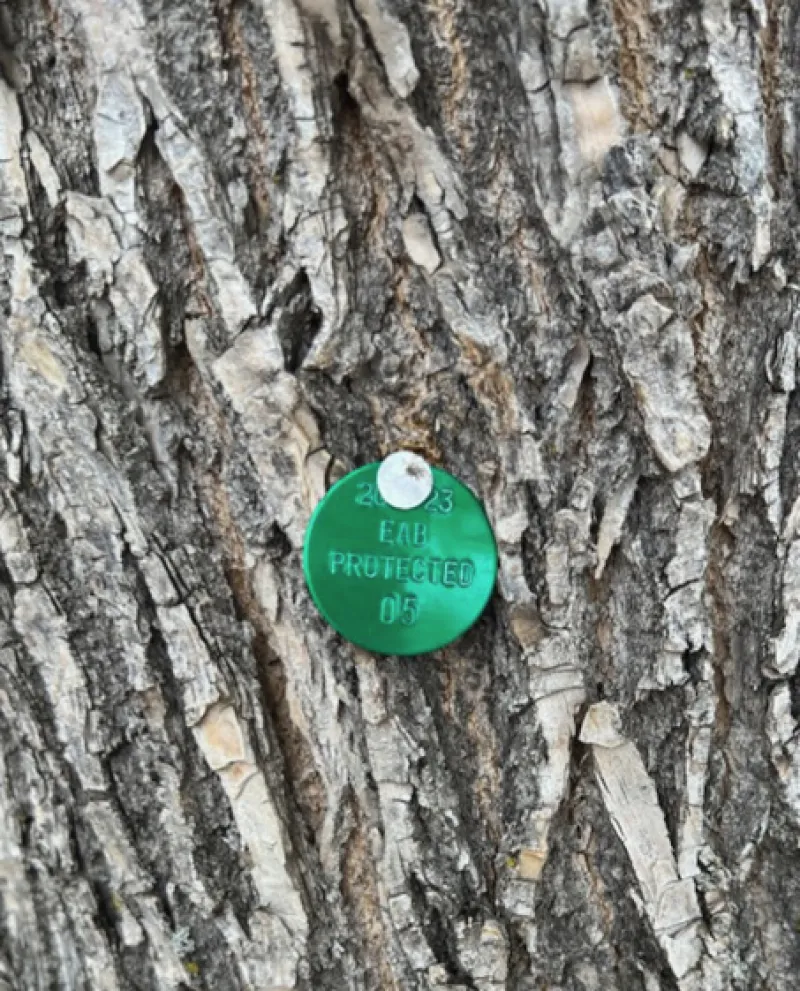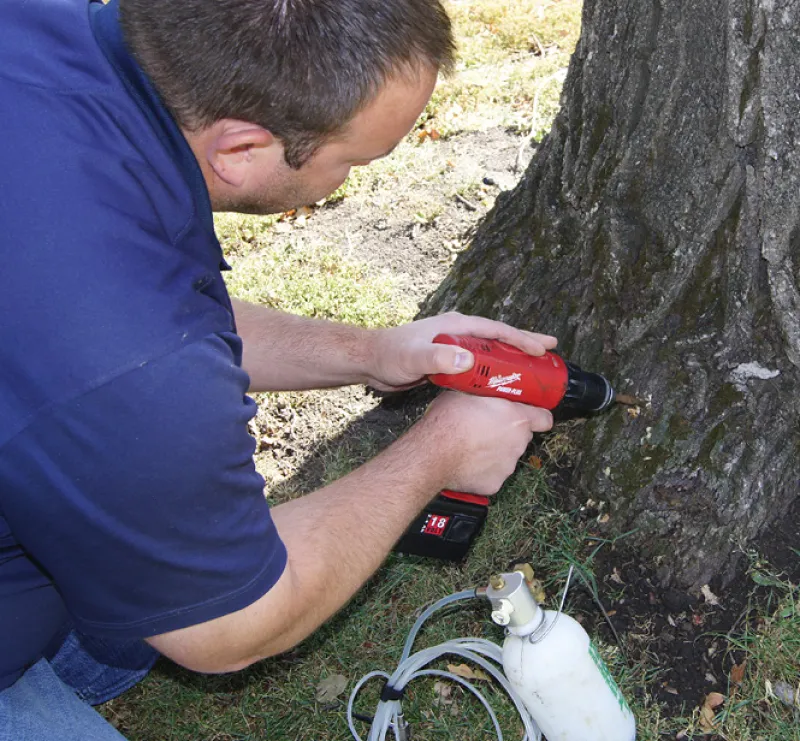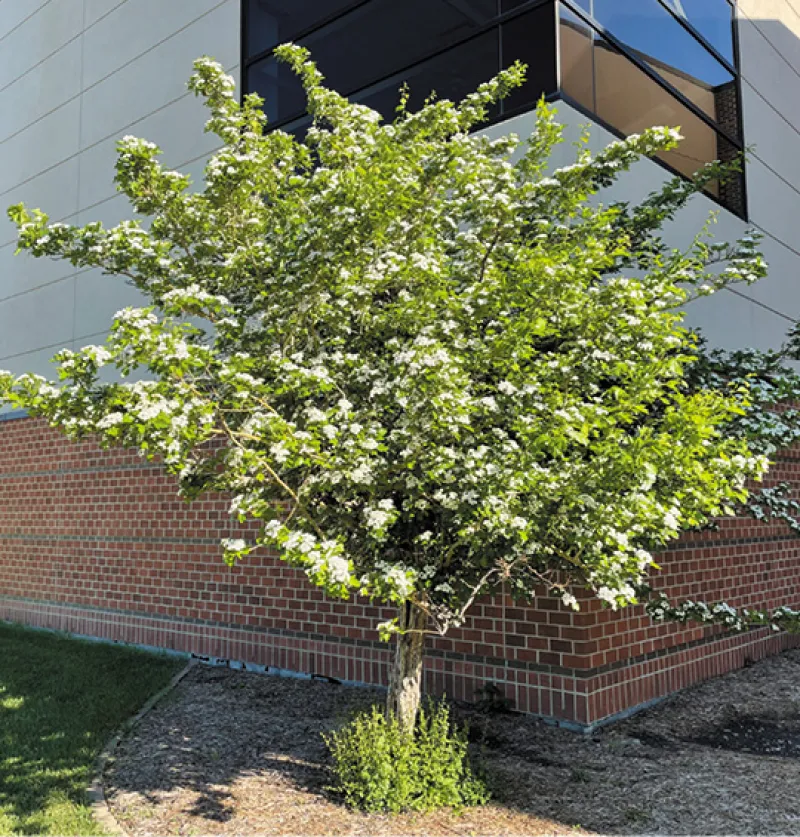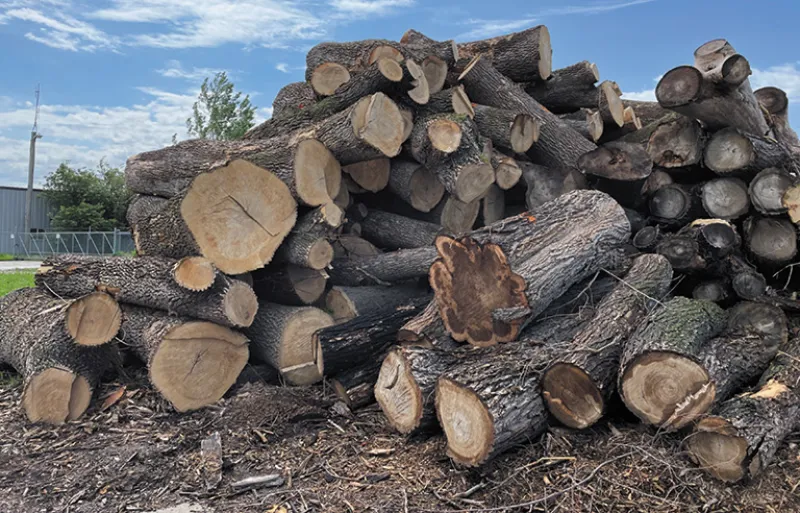Emerald Ash Borer: What's the plan for your community?
(F2240, June 2024)Emerald Ash Borer (EAB) will have a huge impact on ash trees throughout North Dakota in our native forests, shelterbelts and communities. This guide is for city managers, public works directors, local tree board members and others interested in and responsible for managing public trees. There are many different management approaches for planning for and dealing with an EAB infestation, and each community’s response will be unique. This guide gives a broad overview of what to consider and the decisions the city will have to make.
